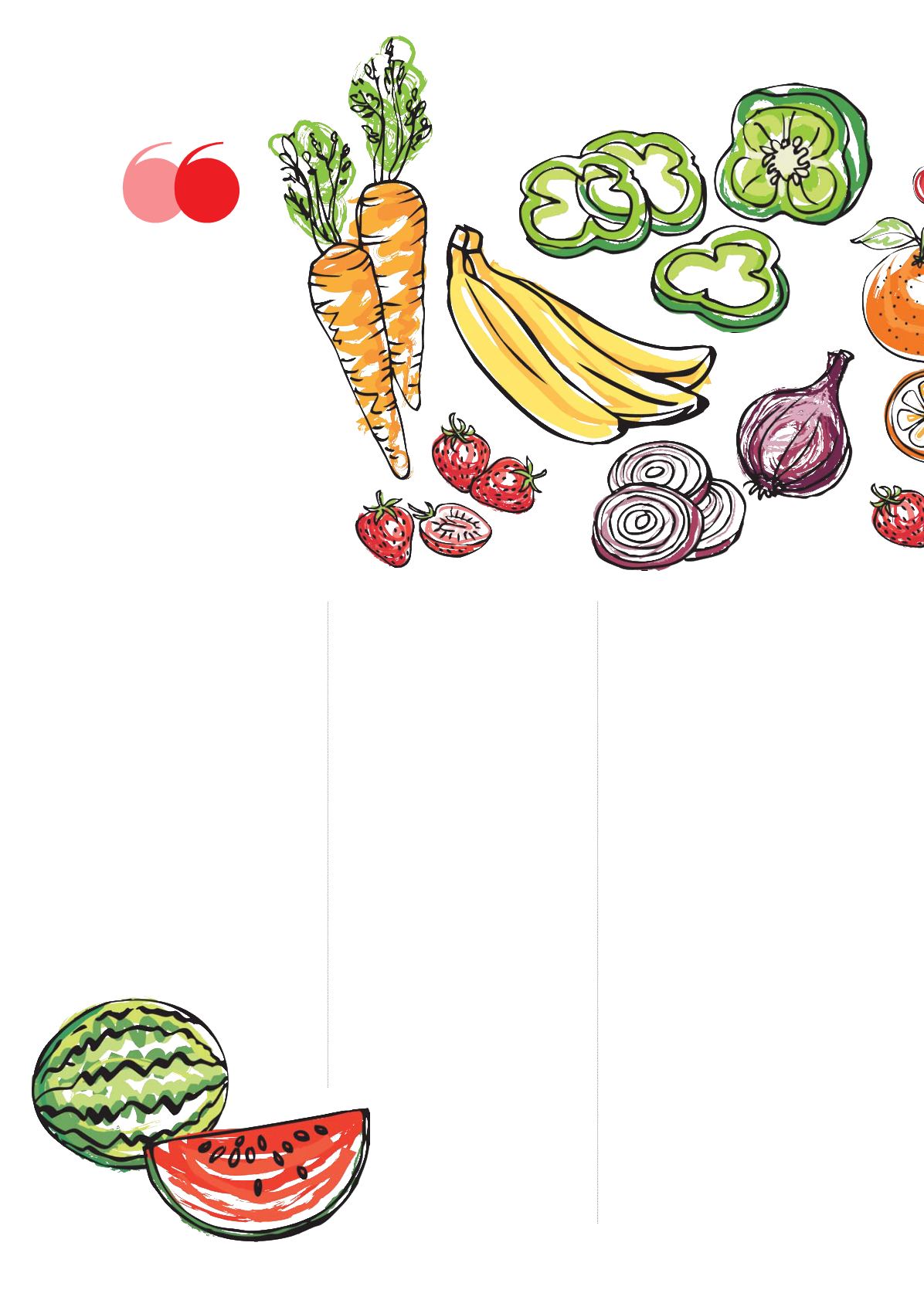
If you can
make your
food offering
stand out from
the crowd,
you’ll give
parents a
great reason
to choose
your setting.
When the time comes to make changes,
keep in mind that good-quality nursery food
needs to fulfil a number of criteria:
Nutritionally balanced
Your food needs to provide more than
70% of the children’s daily nutrient
requirements – that’s 70% of the calories,
protein, fruit and veg, and of course all
the vitamins and minerals they need to
be healthy. Menus need enough servings
of red meat, dairy foods and fish each
day and throughout the week to meet
recommendations, and they must deliver
all of this while not providing too much
salt, sugar or fibre for toddlers.
Portion-controlled
Your food needs to be served in the right
amounts to help children meet their
nutritional needs but remain at a healthy
weight. Almost 30% of under-fives are
overweight and another 20% are at risk
of poor nutritional status. Could you be
failing half the children in your care?
Special diets
Up to 7% of the children in your care
will have a potentially fatal food allergy
– a minute trace of contaminated
food could trigger anaphylaxis.
Do you think your food allergy
management is watertight?
Good enough to eat
Don’t forget to take a look at your
food waste bins after meal service. If
you are throwing away food, is it because
the children are being fed too much
or given too large a snack? Are your
practitioners encouraging them to eat and
leading by example? Or does the food just
not taste good?
INVEST IN TRAINING
As well as considering what’s emerging
from your kitchen, you should also pay
attention to the profile food and nutrition
has in your setting. Cooks, practitioners and
leaders all need to respect and value food
as part of cohesive, high-quality childcare. It
should be remembered that mealtimes are
opportunities for learning and development,
and all staff need to understand their role in
helping children eat well.
Part of the problem for nurseries is that
nursery cooks don’t need to have formal
qualifications in cooking, and early years
practitioners receive very little training in
child nutrition. Essentially, you may not have
anyone working in your setting who knows
anything about preparing healthy meals for
the under-fives. Look at your training budget
and see how much of your spend is related
to food in the last year. Chances are that if
there was any food-related training it was for
food hygiene and food safety. Investing in
acquiring nutritional expertise for your team
will make a real difference.
SHARE YOUR WORK
Once you are confident that your
food and nutrition offer is something you
are proud of, you need to shout about it:
IMPROVING
STANDARDS
Upgrading, or even replacing, your current
food offering can seem daunting, but a lot
can be achieved by taking baby steps. The
first thing you need to do is establish your
baseline. You can do that by looking at
your food objectively and asking yourself
some straightforward questions:
D
How do you rate your food offering?
D
What’s your priority around food –
quality or your bottom line?
D
Would you be happy for your own
children to receive most of their
nutrition in the first years of life from
your setting?
How you answer will dictate how much
needs to change, and where you should
focus your attention.
74
earlyyears.teachwire.net


